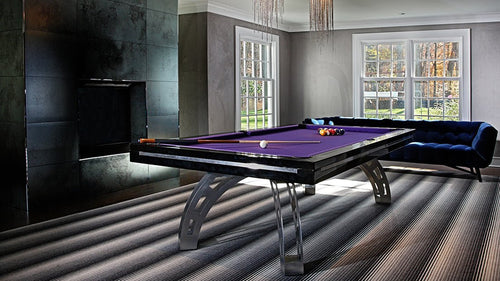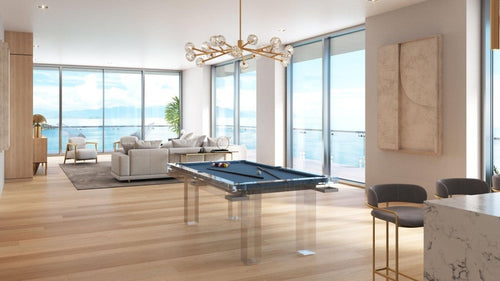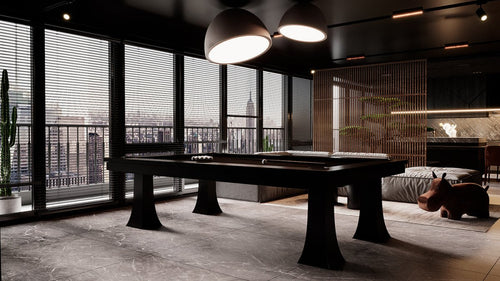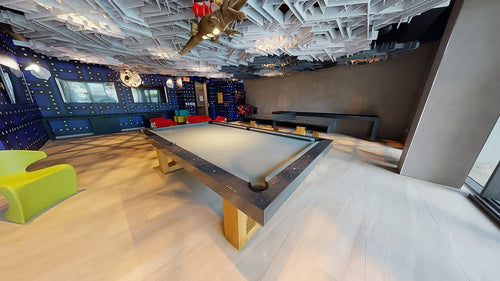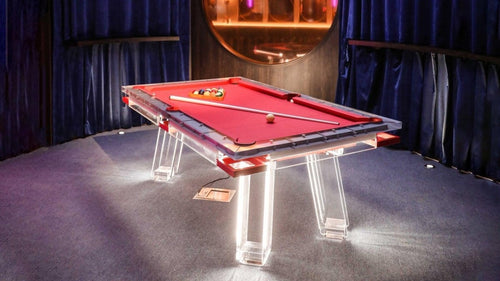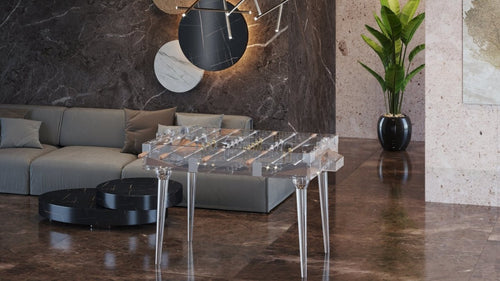Enjoy our modern designs
Estimated Read Time: 9 mins | Updated:
If you've ever watched a professional snooker match on TV, you might have noticed a small display near the foot of the table, showing a number—usually around 45 or 50 degrees. This refers to the temperature at which the table is heated. But why heat a pool or snooker table? Let's dive into the reasons and benefits behind this practice, along with the mechanisms involved in achieving it.
Reducing Humidity and Enhancing Speed
One of the primary reasons for heating a pool or carom billiard table is to control the moisture levels on the playing surface. The slate bed of a carom billiard table is often heated to about 5 °C (9 °F) above room temperature. This subtle increase in temperature helps keep moisture out of the cloth, which is essential for maintaining consistent ball roll and rebound. By reducing the humidity, the table cloth experiences less friction, allowing the balls to travel further and faster. This is especially important in games like three-cushion billiards, where the balls need to cover greater distances with precision.
What Are the Digital Numbers on a Snooker Table?
Those digital numbers displayed on a snooker table typically indicate the temperature of the table, which is maintained around 45 to 50 degrees Celsius (113 to 122 degrees Fahrenheit). This optimal temperature ensures the slate remains at the perfect level of warmth to keep the cloth moisture-free, guaranteeing smooth ball roll during matches. These numbers help tournament organizers and players ensure that conditions remain consistent throughout the game.
Why Temperature Matters in Snooker
A heated snooker table ensures consistent playability, making it a requirement for professional matches. The slight warmth helps the balls travel faster and with greater precision, which is essential for maintaining the integrity of high-level gameplay. Without heating, the cloth could slow the game down, creating unwanted inconsistencies in ball movement and shot accuracy.
In fact, the International Billiards and Snooker Federation (IBSF) recommends heated tables in all professional tournaments to ensure the best possible playing conditions. While temperatures are not strictly mandated, keeping the table warm helps create the ideal playing environment for players to perform at their best.
How Do They Heat Up a Billiard Table?

Heating a pool or billiard table, especially one not originally designed with this feature, involves several potential methods, each with its own considerations:
- Gutter Heaters: Strips commonly used to prevent ice buildup can be attached under the slate, held by window screens between crossbraces—cost-effective but must manage electricity use.
- Nichrome Wire Systems: Resistance wire mounted under the slate on cement-board panels heats the table—requires careful installation, insulation with mineral wool, and frame modifications.
- Infrared Heating Films: Ultra-thin films on fiberboard panels provide full-surface heating. A thermostat-controlled sensor ensures direct, efficient heat transfer to the slate.
- Thermostats and Insulation: Regardless of method, a thermostat is crucial for temperature regulation, and insulating the table when idle (e.g., with thick styrofoam) preserves heat and reduces costs.
- Space Heaters and Electric Blankets: Temporary solutions for unheated spaces—portable heaters or blankets can warm the slate but lack the consistency of built-in systems.
Ensuring Consistent Playability
An electrically heated table is a requirement under international tournament rules to ensure the best possible ball rolling, though specific temperatures are not mandated. This is particularly crucial for games like three-cushion billiards and artistic billiards, where the consistency of ball movement is vital for high-level play. Heating the table helps maintain a uniform surface, preventing the cloth from becoming damp or uneven, which could affect the accuracy and speed of the shots.
Historical and Modern Applications

The practice of heating billiard tables has a long history. Queen Victoria, for instance, had a billiard table heated using zinc tubes to keep ivory balls from warping. The first documented electric heating appeared in a 1927 balkline tournament between Welker Cochran and Jacob Schaefer Jr. in New York, noted by The New York Times as an innovation to ensure optimal playing conditions.
Importance in Carom Billiards

Heating is vital in carom billiards—particularly three-cushion—where precise ball control is key. In regions where carom is popular, even local halls often feature heated tables to provide players with consistent conditions. The predictable roll and rebound are essential for executing complex shots.
DIY Heating Options for Home Tables
While professional tables come with built-in systems, home enthusiasts can retrofit:
- Gutter Heaters: Install roof-ice strips under the table as an affordable heating method.
- Space Heaters: Portable heaters or electric blankets can temporarily warm the slate in unheated spaces.
Conclusion
In summary, heating a snooker table is more than a luxury—it’s essential for fast, consistent play by reducing surface moisture and friction. Whether casual or professional, understanding the science and methods of table heating enhances your appreciation of the game.



